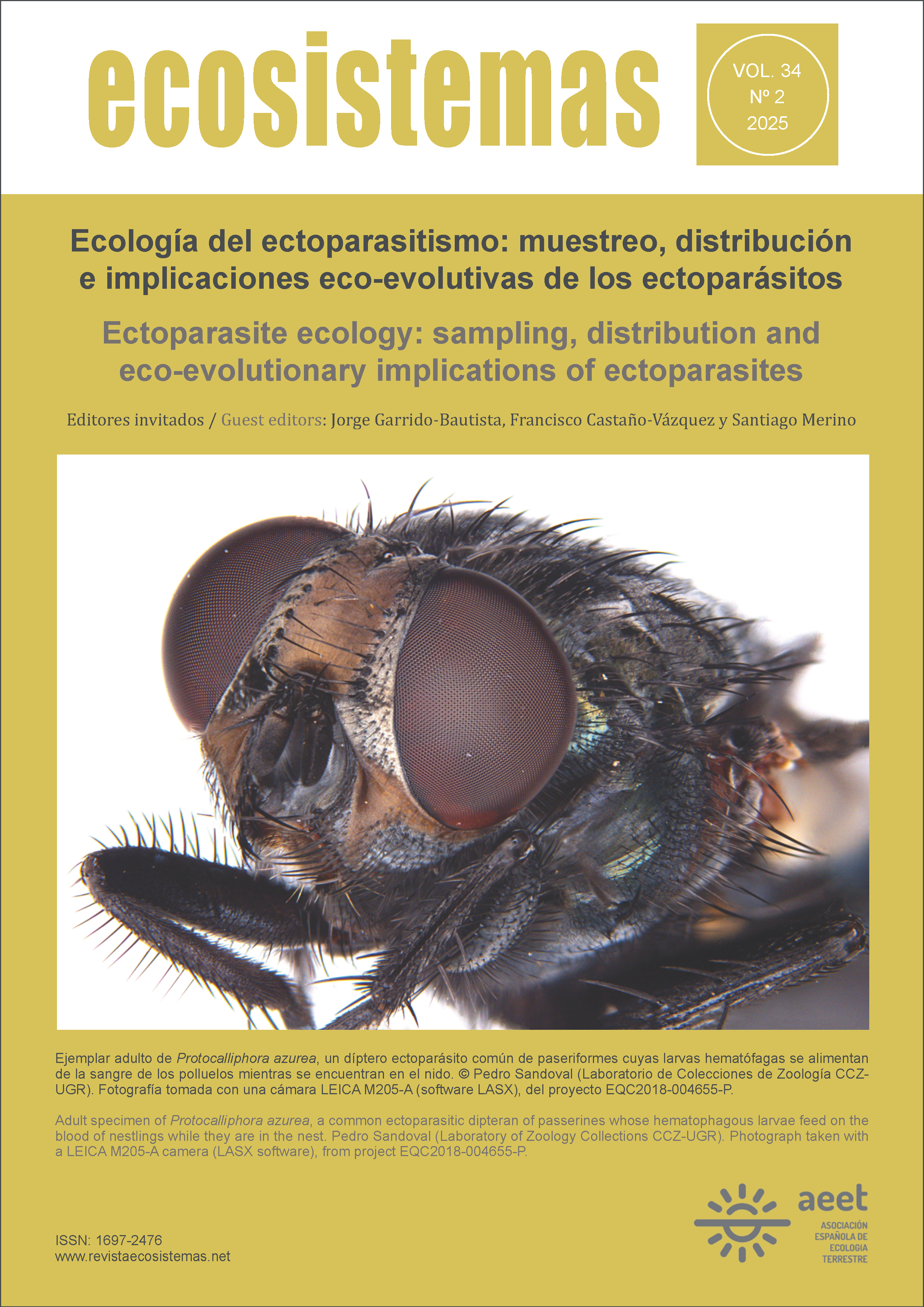Effects of forest type and aridity on the arthropod community in Pinus and Quercus forests of the southern iberian peninsula
Main Article Content
Abstract
Arthropods represent a high faunal diversity in forests and play a key role in ecosystem functioning. Their diversity and composition can be affected by various factors such as aridity, forest structure, and soil characteristics. However, the effect of these factors on the richness and composition of different functional groups of arthropods in the forests of the southern Iberian Peninsula remains unknown. For this reason, samplings were conducted in Andalusia using plots from the National Forest Inventory, considering two levels of aridity (humid and dry) in forests dominated by Pinus halepensis, Pinus pinaster, Quercus faginea, or Quercus ilex subsp. ballota. Forest structure and soil characteristics were evaluated, as well as arthropod species richness and the proportion of four functional groups: phytophagous, predators, detritivores, and polyphagous. Our results indicate that each forest type has distinct edaphic and structural characteristics. Forest type was a key determinant of arthropod richness, with Q. ilex forests showing the highest richness. Arthropod richness was significantly influenced by the interaction between tree species and aridity. Specifically, differences in arthropod richness were observed in Q. ilex and P. pinaster forests depending on aridity (lower richness in dry plots), whereas these differences were not observed in forests dominated by Q. faginea and P. halepensis. In conclusion, the arthropod community is negatively affected by aridity, but this effect is modulated by the dominant tree species.
Downloads
Article Details

This work is licensed under a Creative Commons Attribution-NonCommercial 4.0 International License.
Accepted 2025-07-01
Published 2025-07-23

